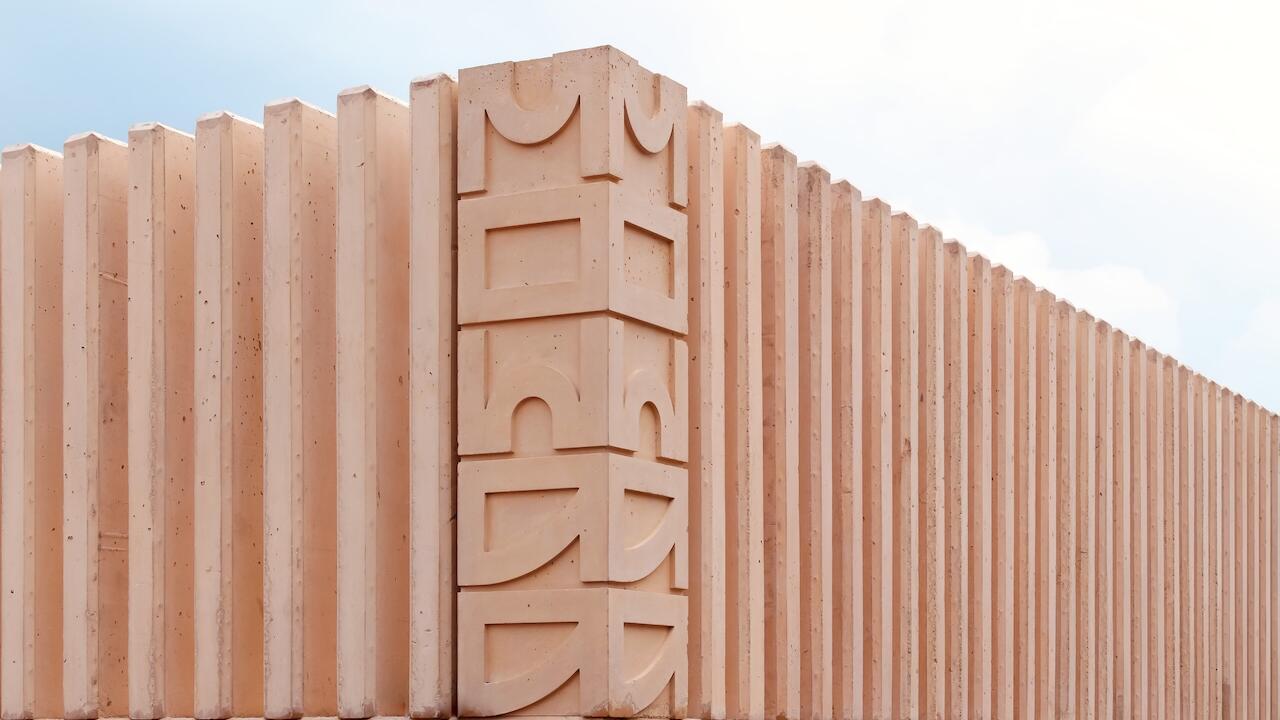Agatha Gothe-Snape
Operating as a beacon for the murky backwater of Australian modernism, Agatha Gothe-Snape tracks the correlation between sybaritic activities and the hierarchies of the art world at The Commercial, Sydney
Operating as a beacon for the murky backwater of Australian modernism, Agatha Gothe-Snape tracks the correlation between sybaritic activities and the hierarchies of the art world at The Commercial, Sydney

The archaic roller door at the entrance to The Commercial, a small gallery space in Sydney, is usually only coiled up in order to sardine people into an opening at any one time: Agatha Gothe-Snape made her debut foray into sculpture by dragging a large piece of steel through it. Her show ‘Late Sculpture’ consisted of a large, self-supporting rolled steel sculpture, Living Sculpture (all works 2013) and a PowerPoint presentation, Heavy Reading, on a Samsung television. The half-tonne steel plate would originally have looked like something you might see covering a hole on a public road. It stands upright by a small cut at the bottom, which splays the metal sheet so that it supports itself with the least amount of intervention required. The PowerPoint presentation comprises a written dialogue between two male Sydney sculptors that took place at a party in 1992 and that transgressed into violence. The artist transcribed the dialogue from an account provided to her by a witness to the event. It tracks a dispute over the direction of an art school, revealing debates about formalist art-making in Sydney at the time. As Shane Haseman points out in his essay: embodied by the script, the heavy, late-modern object plays the role of both set and actor. The duet transforms the space into a theatrical event that begs the question: ‘What did it feel like to feel so strongly about an idea that you would endure pain for it?’
Gothe-Snape has long tracked the correlation between sybaritic activities and the hierarchies of the art world. She has produced mostly ephemeral outcomes both independently and with poet Brian Fuata. Such examples include running ‘cruising’ workshops as an aid to better view art in museums. In 2011, Gothe-Snape spoke on the phone to eight locals from a rural community who responded to an advertisement for non-newsworthy news. After speaking to them for an hour every night of the week, Gothe-Snape stayed up all night drinking and smoking, method-acting the old-school rural newspaper journalist in the novel, The Shipping News (1993) and designed headlines that encapsulated their daily lives over the week. These ran in the small regional newspaper, in a teasing echo of 1960s conceptual tropes of text and its distribution. Last year, Gothe-Snape’s huge, wonky text work WE ALL WALK OUT IN THE END (2012) was shown at the Gallery of Modern Art Australia in Brisbane in ‘Contemporary Australia: Women’. The letters, splayed out as if they were inebriated, were prompted by the idea of an art work, like a party, only ever being able to provide a momentary debauched deviation from the mundane.
Operating as a beacon for the murky backwater of Australian modernism, Living Sculpture illuminates the memory and influence of Richard Serra, Ron Robertson-Swann, Paul Selwood, and most importantly, Gothe-Snape’s father, the artist, Michael Snape, who helped her make the work. Just as Gothe-Snape’s performative past work has been about bodies in space, Living Sculpture postures as a late-modern object in a social scene of references and collaborators from Gothe-Snape’s immediate vicinity. In a blog post following the show, her father spoke of the grounding experience of producing his daughter’s art and credited Gothe-Snape’s ability to make more conceptually rigorous work in a more concise fashion than him. It’s an amicable succession plan, where the two artists are both realizing and being realized by the work.

While Gothe-Snape has always harvested her personal life for meaning with which to imbue her rule-based and minimalist sculptures and performance, ‘Late Sculpture’ made a full-circle to garner very real repercussions. The week following her talk, where she touched the sculpture and spoke of its potential its weight to ‘maim’ someone (referencing Serra), another one of her sculptures ‘serendipitously’ fell and lightly injured the forehead of curator, Susan Gibb, who was participating in a day-long performance by Gothe-Snape at Sydney’s Museum of Contemporary Art. The scar on Gibb’s forehead now embodies Living Sculpture, and Gibb has appropriated it as an ongoing performance.
To receive this work, the viewer must open up and participate in its history: this may or may not be welcome. It is possible to walk away with the feeling that a small innocence in yourself has been polluted by the social exchanges that hide behind the gleaming surface of the works in the show. Gothe-Snape draws traction by exploiting these feelings of irrationality in the face of a clean conceptual object. The sullied feeling that comes from knowledge and experience in ‘Late Sculpture,’ is what I imagine winning a fight must feel like.





















